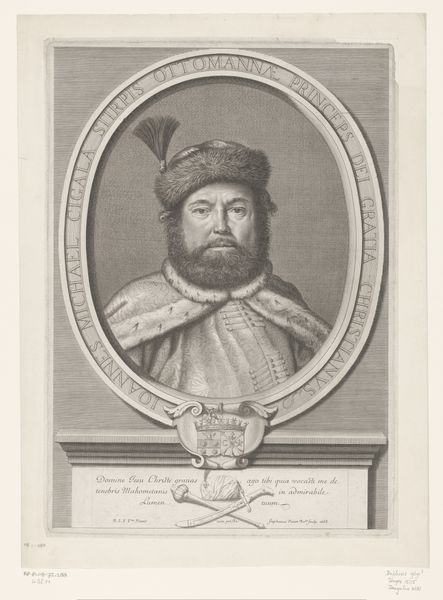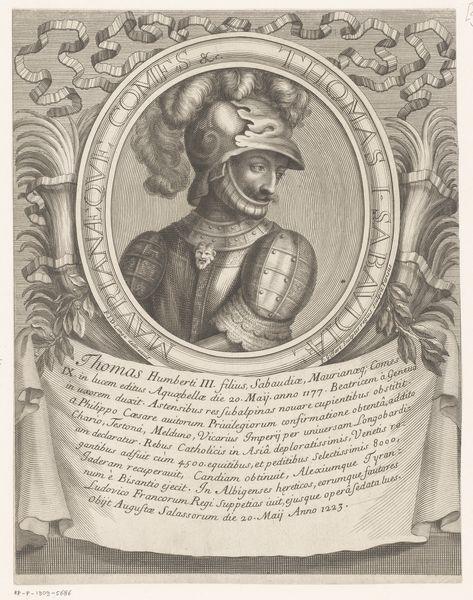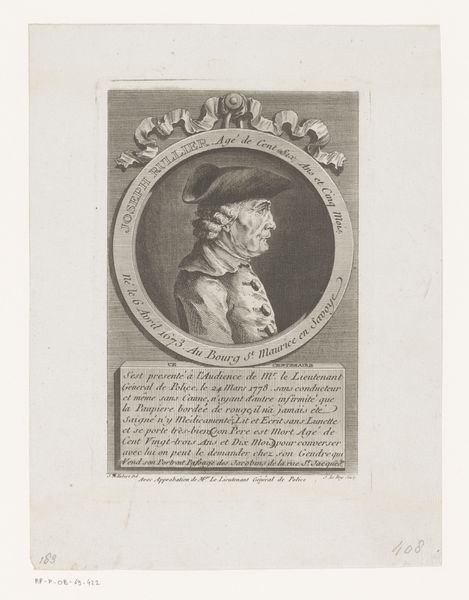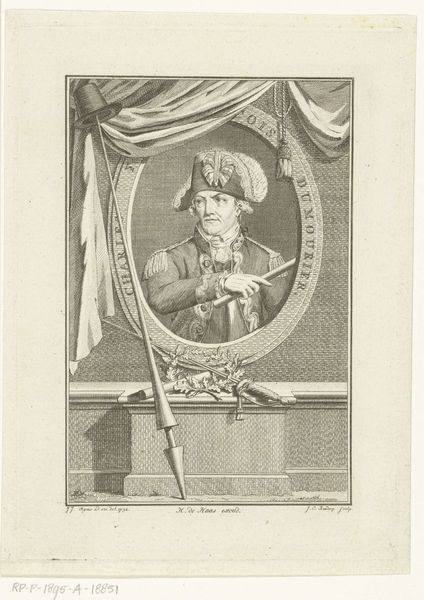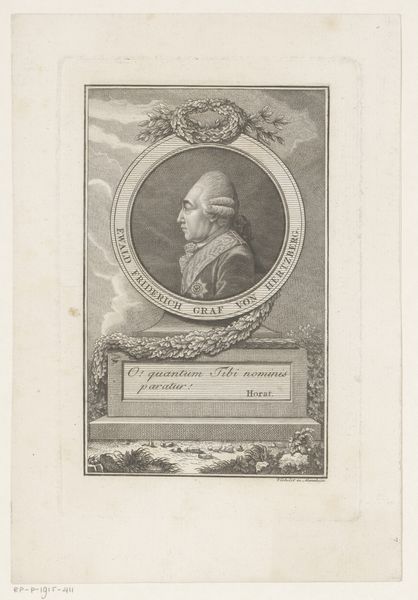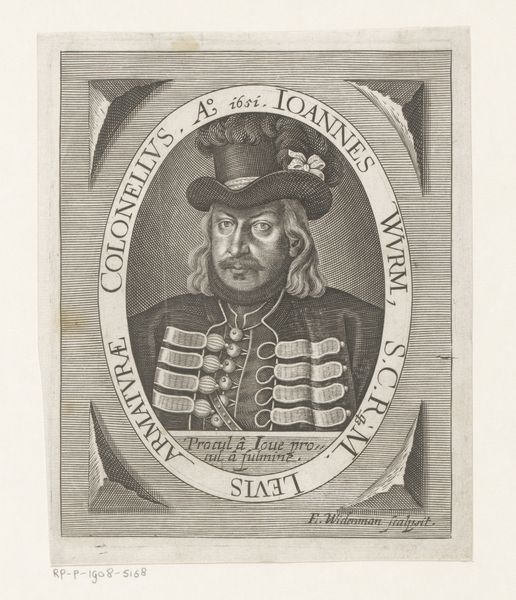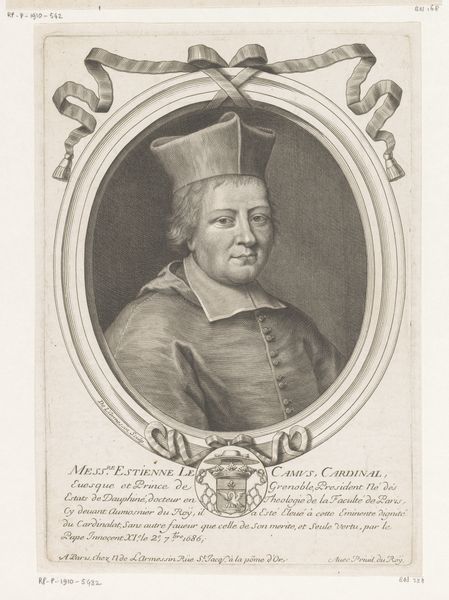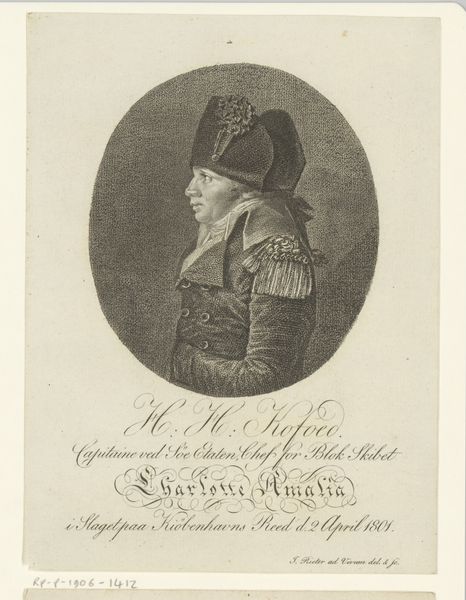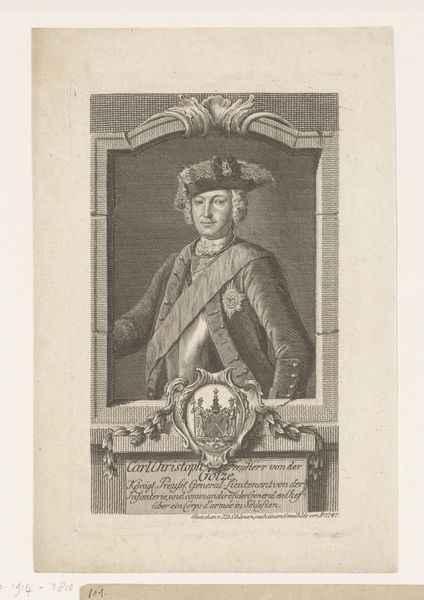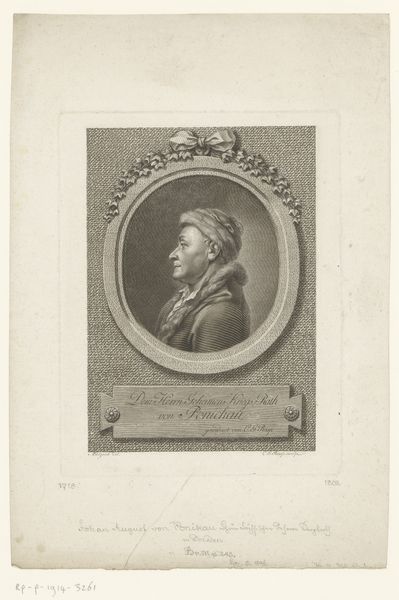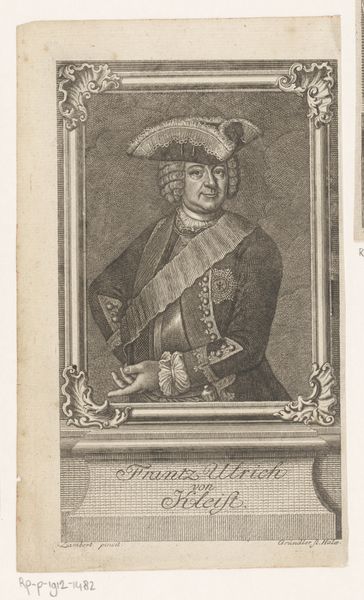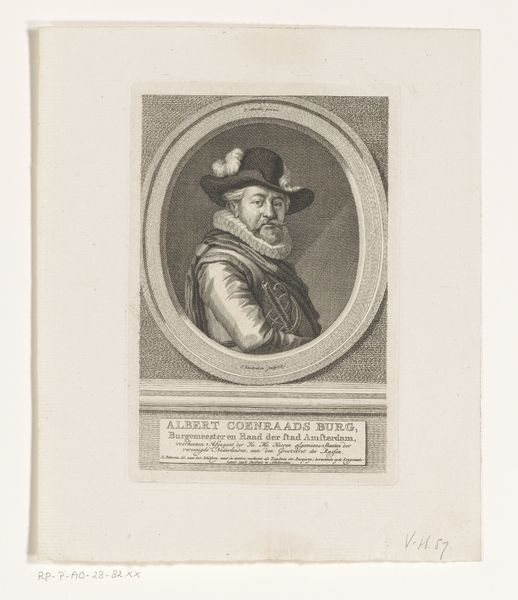
Dimensions: height 342 mm, width 275 mm
Copyright: Rijks Museum: Open Domain
Editor: This is a fascinating print, titled "Portret van Frederik de Grote" or "Portrait of Frederick the Great", made sometime between 1735 and 1788 by Johann Georg Unger. It feels very formal, almost rigid. How do you interpret this work? Curator: This portrait provides a fascinating entry point into understanding the construction of power and identity in 18th-century Prussia. How does seeing Frederick II framed by this elaborate oval, almost like a medal or badge, strike you in terms of his persona? Editor: It definitely elevates him. The ornamentation feels like it’s reinforcing his status and authority. But does the idealised portrayal clash with historical accounts of his policies? Curator: Exactly! Think about the historical Frederick - his complex relationship with the Enlightenment, his aggressive militarism. How does this polished image serve as a tool of propaganda, masking the realities of his reign? We must consider how such images, while seemingly celebrating an individual, function to solidify power structures and contribute to a carefully constructed narrative. The inscription 'Fridericus Magnus' also reinforces his self-proclaimed image, which invites reflection on whether the 'greatness' aligns with more contemporary ideas of social justice. Editor: That's a powerful point. The portrait isn't just a likeness; it’s shaping a specific, perhaps biased, perception of him. Curator: Precisely. And it is not neutral; art never is. The symbolism present contributes to a narrative of legitimization and historical memory, one that continues to shape our understanding of this historical figure. It is worth considering how Frederick's legacy is being received today and how contemporary political movements contribute to these conversations. Editor: I see that. It gives me a lot to consider about the role of art in perpetuating power dynamics and shaping historical narratives. Thank you! Curator: Indeed. Thinking critically about art means acknowledging its embeddedness within socio-political realities, which allows us to decode and challenge established viewpoints.
Comments
No comments
Be the first to comment and join the conversation on the ultimate creative platform.
